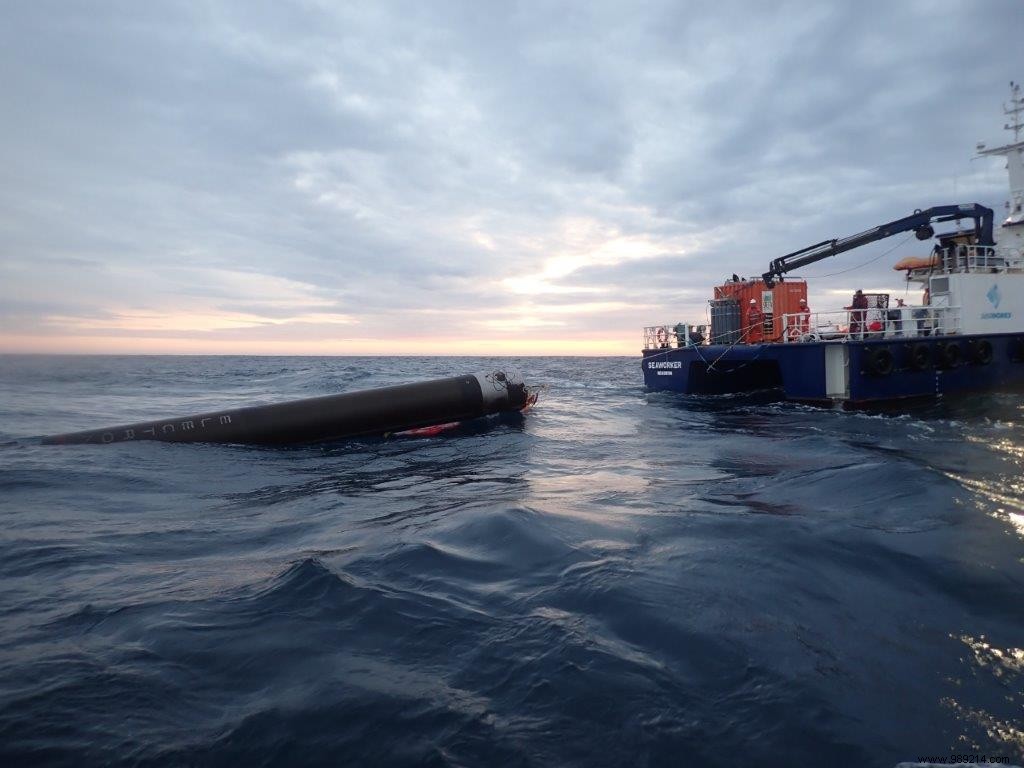As SpaceX has been doing since 2015, the young New Zealand company Rocket Lab aims to recover its boosters to be more competitive. A first full-scale test recently took place. And obviously, the news is good.
On November 20, the company Rocket Lab, which specializes in sending small payloads, reached a major milestone by recovering the first stage of its Electron rocket after having delivered a thirty satellites in Earth orbit. The booster indeed successfully descended to Earth before diving to approximately 650 kilometers New Zealand coasts. It was then recovered by a dedicated vessel before being repatriated to the factory for analysis.
Note that the Electron rocket is too small (about eighteen meters) to carry enough fuel to perform powered hits like SpaceX. Also, Rocket Lab engineers finally opted for the deployment of parachutes, so as to slow down the structure before fishing it out of the ocean. However, eventually, the plan is for Rocket Lab to "catch" these boosters directly in the air by helicopter before they dive into the water.
That said, the company has just provided a preliminary assessment of the condition of its booster. Although they ran a number of tests before this mission, the engineers weren't quite sure what they would recover. It must be said that the structure still endured temperatures above 2400°C during its descent. At first sight, the news is rather good.
"The floor held up remarkably well" , can we read in a press release. “The carbon composite structure was completely intact. As expected, the heat shield suffered thermal damage during reentry. It wasn't designed for that kind of load, but before beefing it up, we wanted to see just how much heat it could take. Thanks to the collected data, our team has already started working on upgrades for future recovery missions” .
Rocket Lab also plans to relaunch some components of this booster . In contrast, the press release does not say how well the engine section of the rocket, with its nine Rutherford engines, fared during reentry. The company also hasn't released photos of the engine section itself. Also, we could imagine that there is still important work to be done to protect this area.

In terms of timing, Rocket Lab's next mission, scheduled for December 12 for the Japanese company Synspective, will be a "classic" mission. On the other hand, there is talk of the company making another recovery attempt early next year. Again, this will involve dropping the booster into the ocean in order to collect additional data. If successful again, Rocket Lab could then consider a first test with a helicopter.
BONUS:the video below allows you to appreciate the separation of the booster and the second stage of the Electron rocket on November 20: